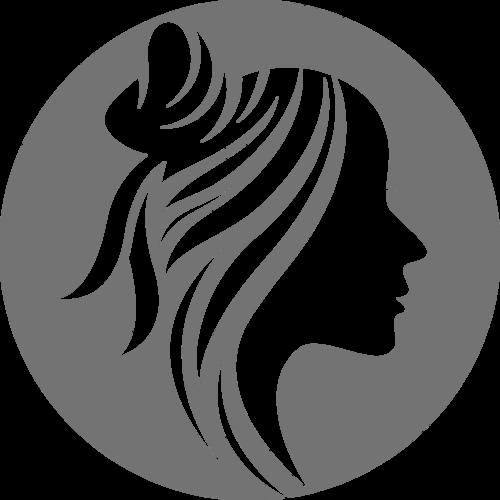BEGINNERS GUIDE TO HAIR WEAVING
A step-by-step guide to level up your skills on hair weaving
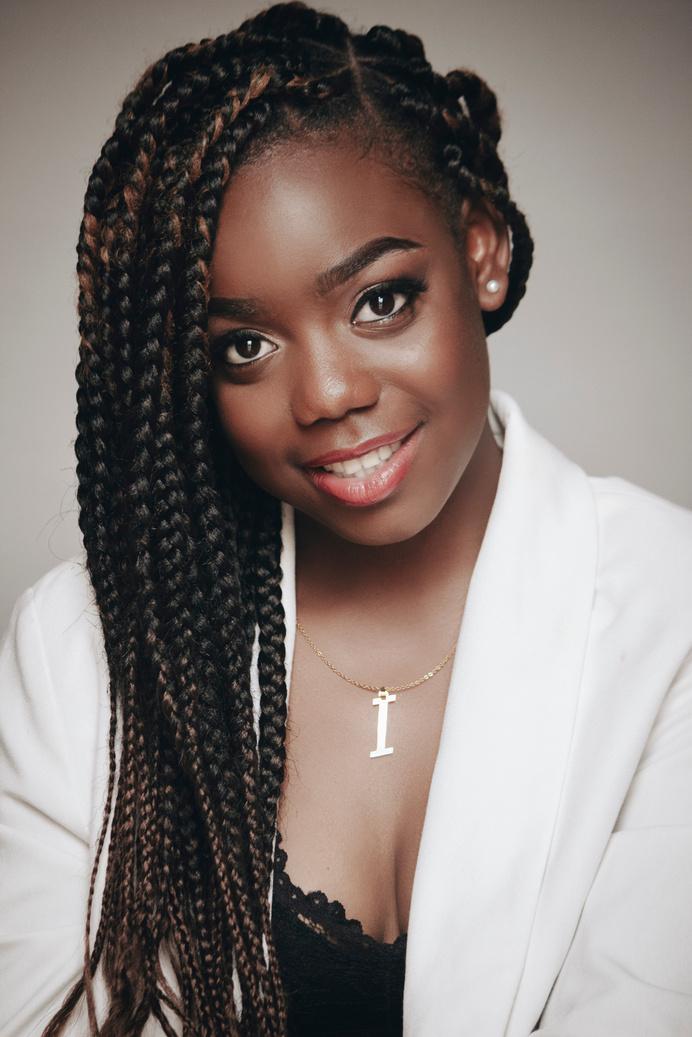
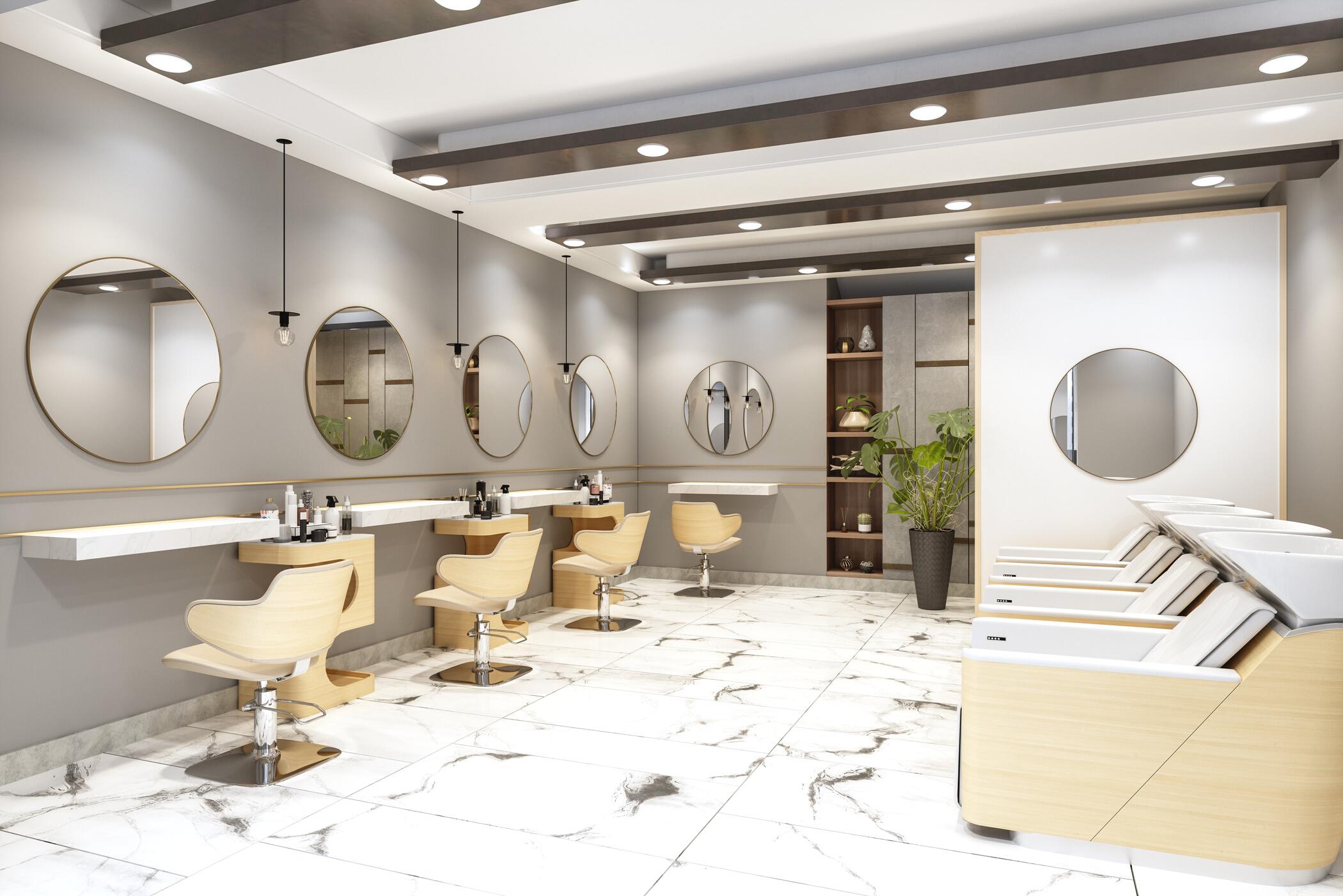 by DAINTY WILSON
by DAINTY WILSON
INTRODUCTION TO HAIR WEAVING
TYPES OF HAIR FOR WEAVING
CHOOSING THE RIGHT HAIR WEAVING TECHNIQUE
PREPARING FOR HAIR WEAVING
INSTALLING THE WEAVE
PROCESS
CARING FOR HAIR WEAVES
MAINTAINING A HEALTHY SCALP
REMOVING AND REINSTALLING HAIR WEAVES
TROUBLESHOOTING COMMON HAIR WEAVE PROBLEMS
ADVANCED HAIR WEAVING TECHNIQUES AND TRENDS
PROLOGUE
Hair is an integral part of our identity and self-expression. It has the power to transform our appearance, boost our confidence, and reflect our individuality For centuries, people have sought innovative ways to enhance their hair, and one such method that has stood the test of time is hair weaving.
Hair weaving is an art form that allows individuals to achieve their desired hairstyles, whether it's adding length, volume, or texture to their natural hair With the advancements in technology, the availability of diverse hair extension options, and the creativity of skilled stylists, hair weaving has evolved into a versatile and transformative technique
This book is a comprehensive guide to the world of hair weaving, providing a wealth of knowledge, techniques, and insights for both professionals in the beauty industry and individuals who want to explore the possibilities of hair weaving for personal use From the basics of understanding different types of hair extensions to advanced styling techniques and emerging trends, this book covers a wide range of topics to help readers master the art of hair weaving.
Chapter by chapter, we will delve into the fundamentals of hair weaving, exploring topics such as the history and evolution of hair weaving, the different types of hair extensions available, and the techniques used to install and maintain them. We will navigate through the intricacies of selecting the right weave colour and texture, customizing styles to suit individual preferences, and troubleshooting common problems that may arise during the weaving process.
Beyond the technical aspects, this book aims to inspire creativity and ignite the imagination We will explore advanced styling techniques that push the boundaries of what is possible with hair weaving, enabling readers to unleash their artistic flair and create unique and stunning hairstyles. We will also delve into emerging trends, exploring how the world of hair weaving is constantly evolving and offering new possibilities for self-expression and personal style.
INTRODUCTION TO HAIR WEAVING PART 1
What is Hair Weaving?
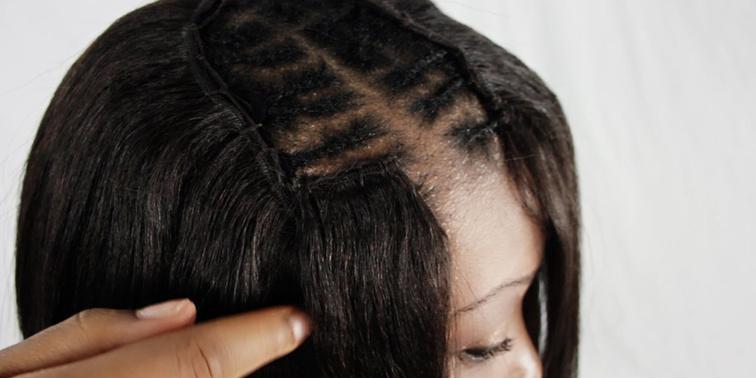
Hair weaving is a popular and versatile hair enhancement technique that involves attaching hair extensions or wefts to the natural hair to create a desired style. It is a non-surgical, semipermanent solution for individuals who want to add length, volume, or texture to their hair Hair weaving allows people to experiment with different hairstyles and transform their look without making permanent changes to their natural hair.
Hair weaving involves the use of various techniques, such as bonding, sewing, or fusion, to attach the extensions to the natural hair. These extensions can be made of natural human hair, synthetic hair, or a blend of both. The weave is carefully integrated with the individual's natural hair, resulting in a seamless and natural-looking hairstyle
The process of hair weaving begins with a consultation with a skilled hairstylist who will assess the individual's hair type, texture, and desired style. Based on the consultation, the hairstylist will recommend the most suitable hair weaving technique and determine the type of hair extensions to be used
INTRODUCTION TO HAIR WEAVING
One popular technique is bonding, where the hair extensions are attached to the natural hair using a special adhesive. This technique offers a quick and convenient way to achieve a desired look, but it requires regular maintenance and may not be suitable for individuals with sensitive scalps.
Another technique is sewing, also known as the sew-in or braiding method This involves creating small cornrows or braids on the scalp and sewing the hair wefts onto the braids using a needle and thread. Sew-in weaves offer a more secure and longlasting attachment, allowing for versatile styling options. However, they require careful installation and proper maintenance to avoid tension and damage to the natural hair
Fusion or strand-by-strand hair weaving is a technique where small sections of the hair extensions are bonded to the natural hair using heat or adhesive This method provides a more natural look and allows for easy styling However, it requires professional application and removal to prevent damage to the hair.
History and Evolution of Hair Weaving
Hair weaving has a rich history that dates back centuries It has been practiced in different cultures and civilizations around the world. The origins of hair weaving can be traced back to ancient Egypt, where elaborate wigs and hairpieces were worn by both men and women These wigs were made from natural human hair, animal hair, and other materials
In ancient Egypt, hair was considered a symbol of status, beauty, and spirituality. Wigs were commonly worn by wealthy individuals and were crafted with intricate designs and embellishments These wigs were not only used as a fashion statement but also served practical purposes, protecting the head from the scorching sun and providing insulation in the desert climate.
Throughout history, hair weaving techniques have evolved and become more sophisticated In ancient Rome, women used hair extensions to enhance their hairstyles and create intricate updo's. They employed various materials, including human hair, animal hair, and even gold threads, to achieve their desired looks.
INTRODUCTION TO HAIR WEAVING
During the Renaissance period, wigs and hairpieces became popular among the European elite. These elaborate creations were crafted with exquisite detail and were often adorned with jewels and elaborate decorations Wigs were seen as a symbol of wealth and social status, and they were an integral part of high fashion and courtly etiquette.
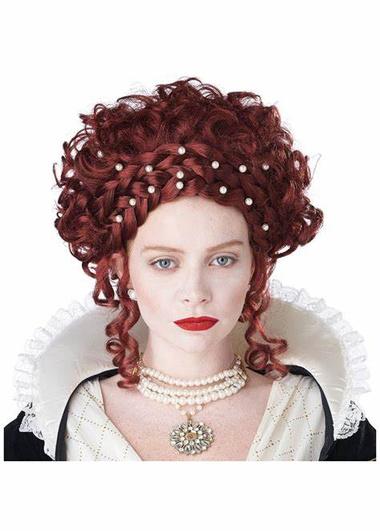
In the 20th century, hair weaving gained significant popularity with the introduction of new techniques and materials. African American women, in particular, embraced hair weaving as a way to express their style and cultural identity. The practice of hair weaving expanded, and various methods, such as bonding, sewing, and fusion, were developed to cater to different hair types and preferences.
Hair weaving techniques continued to evolve with advancements in technology and the availability of new materials. Synthetic hair extensions were introduced, offering a more affordable alternative to natural human hair These synthetic fibers were designed to mimic the look and feel of real hair, providing individuals with a wide range of options.
With the advent of the internet and social media, hair weaving has become even more popular and accessible People can now explore a vast array of hair weaving styles, techniques, and products, thanks to online tutorials, forums, and beauty influencers This has allowed for greater creativity and selfexpression, as individuals can easily learn and experiment with different hair weaving methods
INTRODUCTION TO HAIR WEAVING
Benefits of Hair Weaving
Hair weaving offers numerous benefits to individuals seeking to enhance their appearance and experiment with different hairstyles. Some of the key benefits include:
Length and Volume: Hair weaving allows individuals with shorter or thinner hair to achieve longer and fuller hairstyles The added hair extensions provide instant length and volume, transforming the look of the natural hair. Whether someone desires cascading locks or a voluminous updo, hair weaving can help achieve the desired effect
Versatility: With hair weaving, individuals can explore a wide range of hairstyles that may not be achievable with their natural hair alone. Whether it's long flowing locks, glamorous curls, or trendy braids, hair weaving offers endless styling possibilities It provides the flexibility to change hairstyles frequently, allowing individuals to adapt to different occasions or personal preferences.
Protective Styling: Hair weaving can serve as a protective hairstyle, shielding the natural hair from external elements, such as heat, chemicals, and daily manipulation. It helps in minimizing damage and promoting healthier hair growth. By providing a barrier between the natural hair and harsh environmental factors, hair weaving allows individuals to maintain the health and integrity of their hair
Convenience: Once properly installed, a hair weave requires minimal daily styling, making it a convenient option for individuals with a busy lifestyle Unlike natural hair, which often requires extensive washing, conditioning, and styling, a hair weave can be easily maintained with simple care routines. It reduces the time and effort spent on styling and maintaining the hair, allowing individuals to enjoy a stylish look without the hassle
INTRODUCTION TO HAIR WEAVING
Confidence and Self-expression: Hair is often associated with confidence and self-expression. Hair weaving provides individuals with the opportunity to experiment with different looks, express their personal style, and boost their selfconfidence. Whether someone wants to try out a bold new colour, add length and volume for a special event, or simply change up their everyday look, hair weaving offers the versatility to do so
Hair Loss Solutions: For individuals experiencing hair loss or thinning, hair weaving can be an effective solution. It helps in concealing bald spots or thinning areas, giving the appearance of a full head of hair Hair extensions can be strategically placed to create a natural-looking hairstyle that masks hair loss and boosts self-esteem.
Immediate Results: One of the most appealing aspects of hair weaving is the immediate transformation it provides Unlike other hair enhancement methods that require time to achieve desired results, hair weaving instantly adds length, volume, and texture to the hair. This makes it an ideal option for those seeking a quick change or a temporary style for a special occasion
Hair weaving has become a popular and widely accepted practice, embraced by people from various backgrounds and cultures. Its versatility, convenience, and transformative effects make it a goto option for those seeking to enhance their natural beauty and explore different hairstyles.
It is a versatile and transformative hair enhancement technique that allows individuals to achieve various desired looks From its ancient roots to modern-day practices, hair weaving has evolved over time, offering an array of techniques and materials to cater to different preferences and hair types.
The benefits of hair weaving, including the ability to add length, volume, and texture, its versatility in styling, and the convenience it offers, have made it a popular choice among people worldwide.
TYPES OF HAIR FOR WEAVING PART 2
Natural Human Hair
When it comes to hair weaving, natural human hair is considered the gold standard. It is highly sought after due to its superior quality, realistic appearance, and versatility. Natural human hair is sourced from individuals who willingly donate or sell their hair, often from countries known for their hair culture, such as India, Brazil, and Peru.
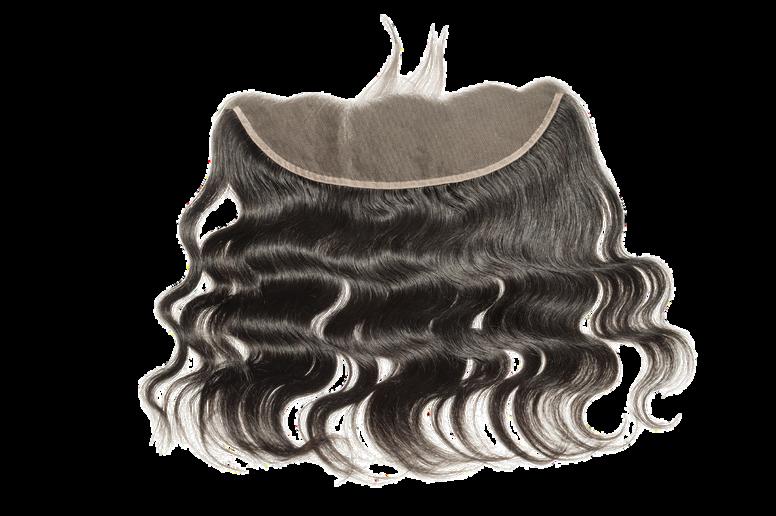
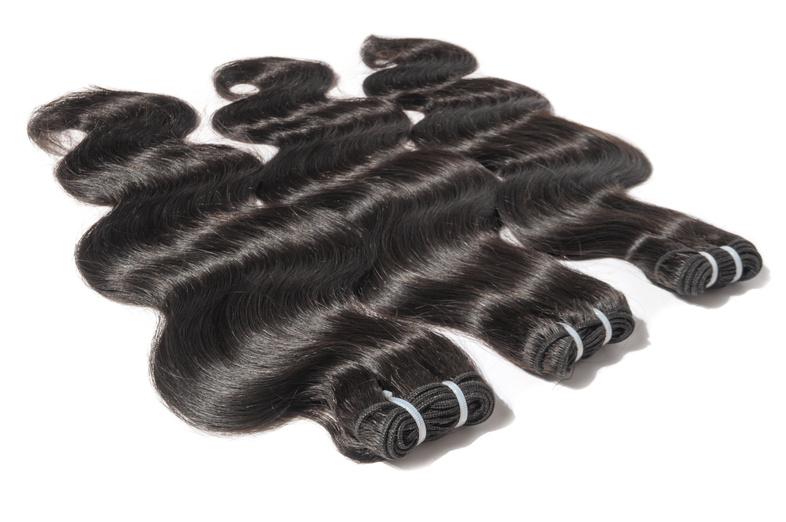
The process of obtaining natural human hair for weaving starts with careful selection and collection Donors are chosen based on the desired hair type, texture, and length The hair is then cut in a way that preserves its cuticle alignment, ensuring a smoother and more natural look when woven into the hair.

TYPES OF HAIR FOR WEAVING
There are several advantages to using natural human hair for weaving. First and foremost, it blends seamlessly with the individual's natural hair, providing a natural and undetectable look It also offers a wide range of styling options, including heat styling, colouring, and chemical treatments, just like one would do with their own hair. This versatility allows individuals to achieve their desired look while maintaining the integrity of the hair
Natural human hair is available in various textures, such as straight, wavy, curly, or kinky. This diversity ensures that there is a suitable option for every hair type and desired style. Additionally, natural human hair is known for its durability and longevity, often lasting longer than synthetic hair extensions with proper care and maintenance.
However, natural human hair for weaving does come with a higher price tag compared to synthetic options The cost reflects the quality and authenticity of the hair, as well as the ethical sourcing practices involved. It is important to ensure that the natural human hair used for weaving is ethically sourced, with proper consent and fair compensation to the donors
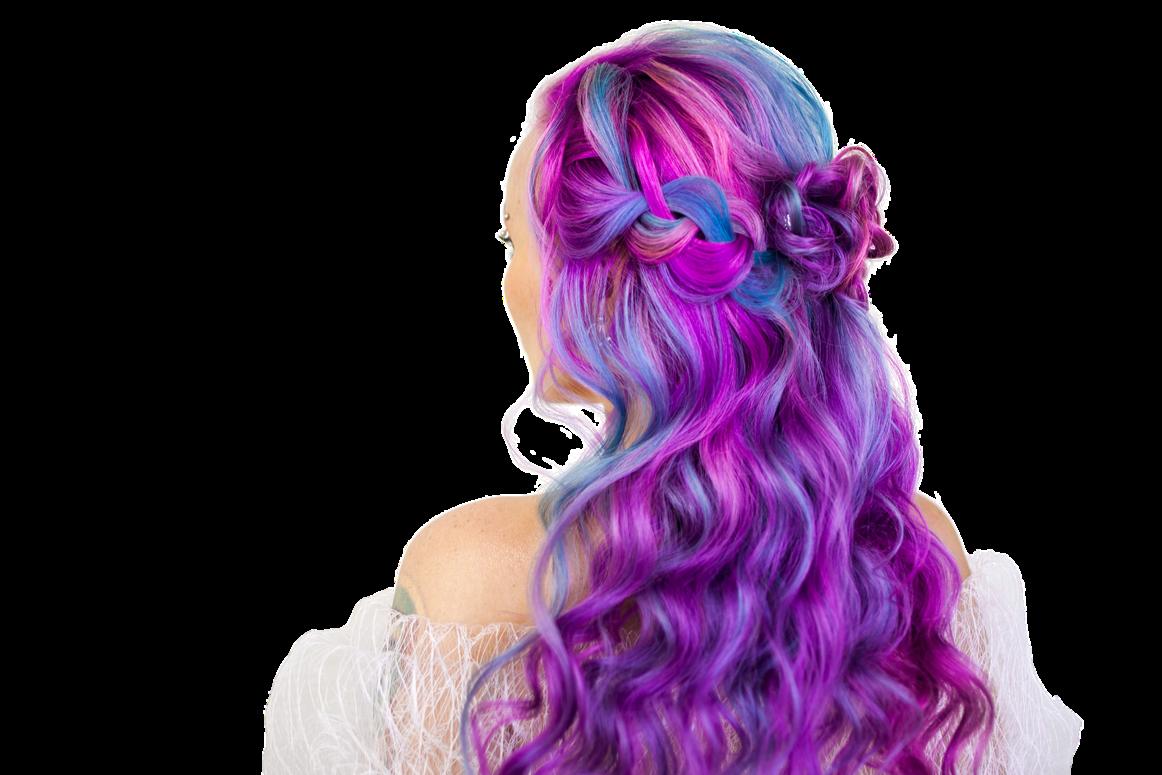
TYPES OF HAIR FOR WEAVING
Synthetic Hair
Synthetic hair has come a long way in recent years and is now a popular choice for hair weaving Synthetic hair extensions are made from specially formulated fibres that mimic the appearance and texture of natural hair. These fibres are designed to withstand heat, styling products, and everyday wear, making them a durable and affordable alternative to natural human hair
One of the advantages of synthetic hair for weaving is its costeffectiveness. Synthetic hair extensions are generally more affordable than natural human hair, making them accessible to a wider range of individuals This affordability allows for more experimentation with different styles and looks without breaking the bank.
Synthetic hair is available in a wide range of colours, textures, and lengths, providing individuals with countless options to suit their preferences. Whether someone desires sleek and straight hair, bouncy curls, or voluminous waves, there is a synthetic hair option to meet their styling needs.
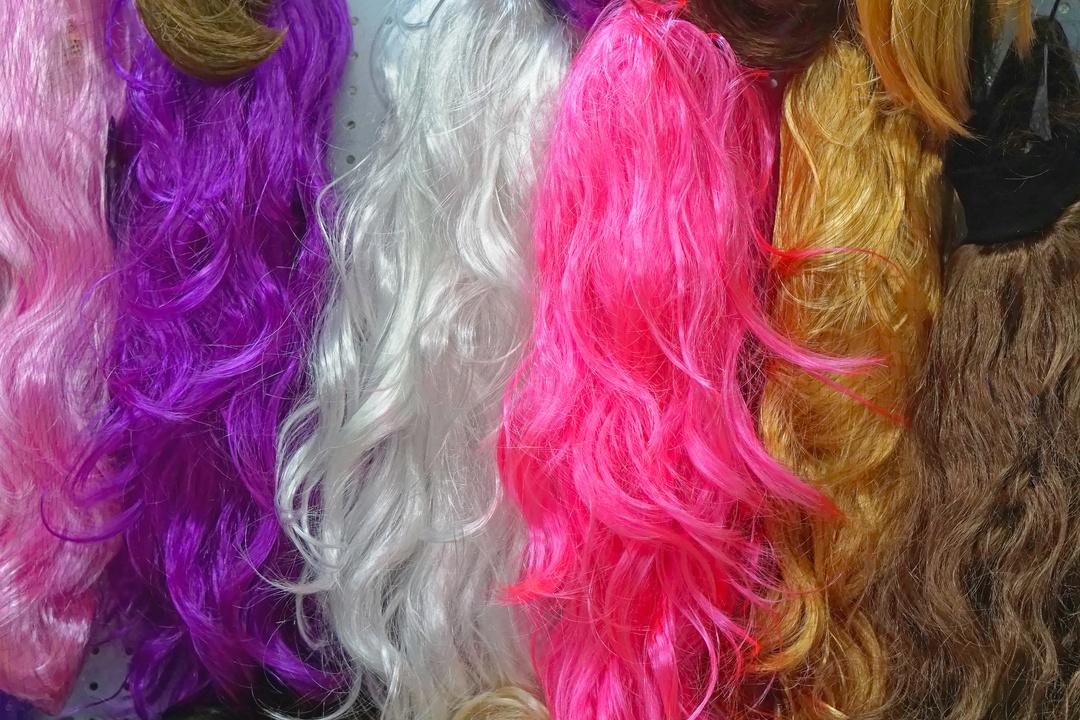
TYPES OF HAIR FOR WEAVING
Another benefit of synthetic hair is its low-maintenance nature. Unlike natural human hair, synthetic hair extensions hold their style and shape, requiring minimal effort to maintain Synthetic hair retains its curl or wave pattern even after washing, allowing individuals to achieve a consistent look with ease

However, there are some limitations to consider when using synthetic hair for weaving One significant drawback is its limited heat resistance Synthetic hair is sensitive to high temperatures, and direct heat styling tools such as curling irons or flat irons can cause damage or melting of the fibers. This restricts the styling options available with synthetic hair, as heat styling may not be possible or may require specialized heat-resistant synthetic hair extensions
Synthetic hair also tends to have a shinier and less natural appearance compared to natural human hair. While advances in technology have made synthetic hair look more realistic, it may still lack the natural movement and texture of human hair However, with proper styling and care, synthetic hair can still provide a beautiful and satisfactory look.
TYPES OF HAIR FOR WEAVING
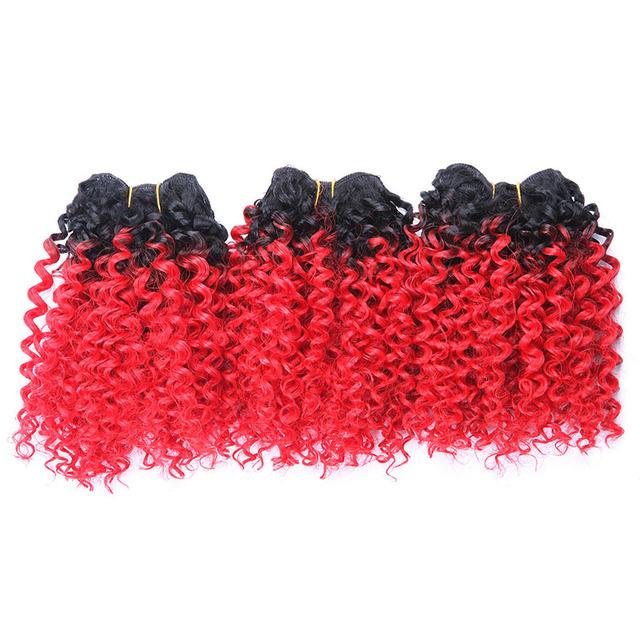
Blended Hair Options
Blended hair options offer the best of both worlds by combining natural human hair and synthetic fibres These blended hair extensions aim to provide a balance between the realistic look and versatility of human hair and the affordability and lowmaintenance nature of synthetic hair.
Blended hair extensions typically feature a combination of natural human hair and high-quality synthetic fibres The proportions may vary, with some blends having a higher percentage of natural human hair and others leaning more towards synthetic fibres. The specific blend ratio will determine the overall characteristics of the hair extensions
The advantage of blended hair options is that they offer a more affordable alternative to full human hair extensions while maintaining a more natural look and feel compared to purely synthetic hair The human hair component provides a realistic appearance, ensuring that the hair extensions blend seamlessly with the natural hair. The synthetic fibres contribute to the durability and low-maintenance nature of the hair extensions.
TYPES OF HAIR FOR WEAVING
Blended hair options offer a wide range of styling possibilities, allowing individuals to use heat styling tools and apply chemical treatments with caution It is essential to follow the manufacturer's instructions and recommendations to ensure the longevity of the blended hair extensions.
When selecting blended hair options for weaving, it is crucial to consider the quality of both the human hair and the synthetic fibres High-quality blends will provide a more natural appearance, better durability, and a longer lifespan. It is recommended to purchase blended hair extensions from reputable and trusted suppliers to ensure the authenticity and quality of the product
In conclusion, there are different types of hair available for weaving, each with its own characteristics and benefits. Natural human hair offers the highest quality, versatility, and realism, although it comes with a higher price tag Synthetic hair provides an affordable and low-maintenance option, although it may have limitations in terms of heat styling. Blended hair options offer a middle ground, combining the natural look of human hair with the durability and affordability of synthetic fibres Choosing the right type of hair for weaving depends on individual preferences, budget, and desired style, ensuring a customized and satisfying hair weaving experience.

CHOOSING THE RIGHT TECHNIQUE PART 3
Bonding Technique
The bonding technique is one of the most common and popular methods used in hair weaving. It involves attaching the hair extensions to the natural hair using a special adhesive or bonding glue The glue creates a secure bond between the extensions and the natural hair, allowing for a seamless and natural-looking result.
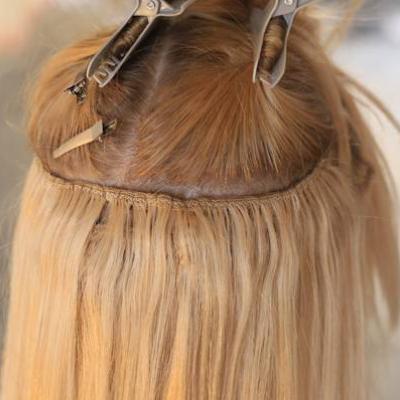
The bonding technique offers several advantages. First, it is relatively quick and easy to apply, making it a convenient option for individuals who desire a temporary hair transformation The process typically involves applying a small amount of bonding glue onto the weft or extension and then carefully pressing it onto the natural hair. The adhesive dries quickly, creating a strong bond that holds the extensions in place
Another benefit of the bonding technique is its versatility. The extensions can be attached at different points along the natural hair, allowing for various styling options. Whether someone wants to add length, volume, or create highlights or lowlights, the bonding technique provides the flexibility to achieve the desired look.
CHOOSING THE RIGHT TECHNIQUE
Bonded extensions can be worn for several weeks before requiring maintenance or removal However, it is important to follow proper care instructions to ensure the longevity of the bond. Regular washing, conditioning, and avoiding excessive heat or friction will help maintain the integrity of the bond and prevent premature detachment
It is worth noting that the bonding technique may not be suitable for individuals with sensitive scalps or those who experience allergies to the adhesive used. It is important to perform a patch test prior to the application to ensure there are no adverse reactions
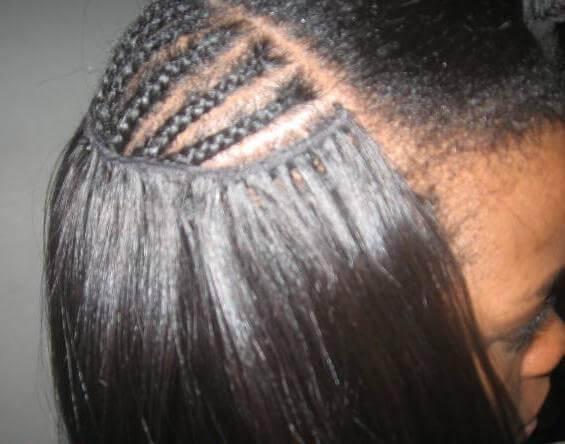
CHOOSING THE RIGHT TECHNIQUE
Topic 2: Sew-In Technique
The sew-in technique, also known as the braiding method, is another popular option for hair weaving It involves creating small cornrows or braids on the natural hair and then sewing the hair wefts onto these braids using a needle and thread. The sew-in technique provides a secure and long-lasting attachment for the extensions
One of the primary advantages of the sew-in technique is its durability The hair wefts are tightly sewn onto the braids, ensuring that they stay in place for an extended period. This makes sew-in weaves an ideal choice for individuals who want a long-term hair transformation without frequent maintenance or readjustment
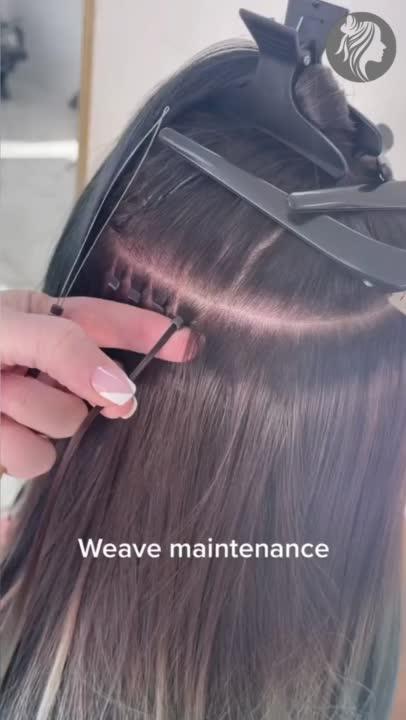
The sew-in technique also allows for versatility in styling. The extensions can be sewn in various patterns and directions, providing flexibility in creating different hairstyles. Whether someone desires a sleek and straight look or voluminous curls, the sew-in technique offers the ability to achieve a wide range of styles
Moreover, the sew-in technique helps in distributing the weight of the extensions evenly across the scalp This reduces tension and potential damage to the natural hair, making it a suitable option for individuals concerned about hair breakage or hair loss.
Proper maintenance is crucial for sew-in weaves to ensure the health of the natural hair and longevity of the style Regular washing, conditioning, and avoiding excessive pulling or tension on the braids are essential. It is also recommended to visit a professional hairstylist for the installation and removal of sew-in weaves to prevent any damage or mishaps
CHOOSING THE RIGHT TECHNIQUE
Fusion Technique
The fusion technique, also known as strand-by-strand or individual bonding, is a method that involves attaching small sections of hair extensions to the natural hair using heat or adhesive. The extensions are typically pre-bonded with keratin or another type of adhesive that fuses with the natural hair when heated or activated by a specialized tool

One of the key advantages of the fusion technique is its ability to create a seamless and natural look. The individual bonds are carefully attached close to the roots of the natural hair, resulting in a virtually undetectable integration. The extensions move and blend with the natural hair, allowing for a realistic and versatile hairstyle
The fusion technique offers long-lasting results. With proper care and maintenance, fusion extensions can remain intact for several months. This makes it an ideal choice for individuals who want a semi-permanent hair transformation without the need for frequent reinstallation
CHOOSING THE RIGHT TECHNIQUE
The fusion technique provides the flexibility to style the hair in various ways. The extensions can be curled, straightened, and even coloured to achieve the desired look It is important to use heat styling tools with caution and follow the manufacturer's instructions to prevent damage to the bonds or natural hair.
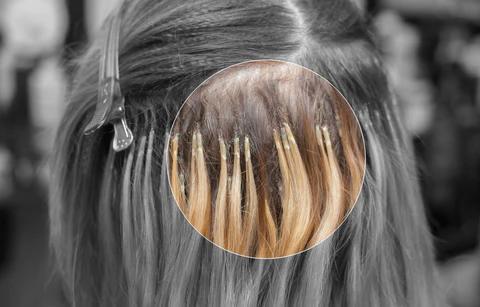
Maintenance is key for the longevity of fusion extensions Regular washing, conditioning, and using appropriate hair products are essential for keeping the bonds intact and the natural hair healthy. It is recommended to consult a professional hairstylist for both the application and removal of fusion extensions to ensure proper techniques and minimize any potential damage
Choosing the right hair weaving technique depends on various factors, including personal preferences, desired style, and lifestyle considerations. Whether someone prefers a temporary transformation with the bonding technique, a long-lasting option with the sew-in technique, or a seamless blend with the fusion technique, each method offers its own unique benefits and considerations. Consulting with a professional hairstylist and considering individual hair type and condition will help in making an informed decision and achieving the desired hair weaving result
CHOOSING THE RIGHT TECHNIQUE

PREPARING FOR HAIR WEAVING PART 4
Hair Preparation and Maintenance
Before embarking on the hair weaving journey, it is crucial to ensure that the natural hair is properly prepared and maintained. This preparation sets the foundation for a successful and longlasting hair weave installation Here are some key steps to consider:
Detangling: Start by thoroughly detangling the natural hair using a wide-toothed comb or a detangling brush. This helps in removing any knots or tangles that may hinder the weaving process Take extra care when detangling to minimize hair breakage or damage.

Cleansing: It is essential to cleanse the natural hair and scalp before the hair weave installation Use a gentle clarifying shampoo to remove any product build up, dirt, or excess oils Follow up with a moisturizing conditioner to restore hydration and manageability to the hair.
Trimming: If necessary, consider trimming the ends of the natural hair before the weave installation This helps to get rid of split ends and promotes healthier hair growth. Trimming ensures that the weave blends seamlessly with the natural hair, resulting in a more natural-looking hairstyle.
PREPARING FOR HAIR WEAVING
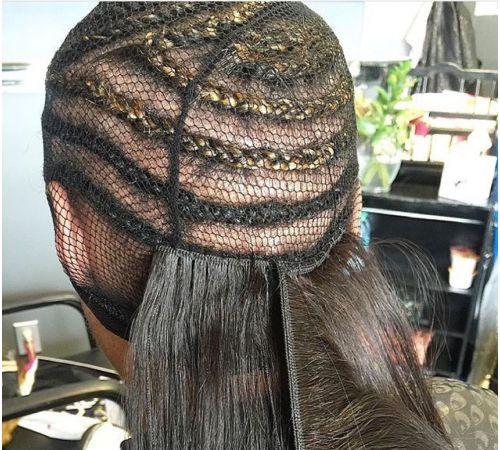
Deep Conditioning: Treat the natural hair to a deep conditioning treatment to nourish and strengthen it. Apply a deep conditioner or hair mask and leave it on for the recommended time to provide intense hydration and repair any damage. Rinse thoroughly to ensure that no residue remains on the hair.
Moisturizing: Proper moisturization is crucial for maintaining the health and manageability of the natural hair Use a leave-in conditioner or moisturizing hair spray to keep the hair hydrated and prevent it from becoming dry or brittle. Pay special attention to the ends of the hair, as they are prone to dryness and breakage
Protective Styling: Consider protective styling options, such as braids or twists, to further protect the natural hair during the weave installation These styles help in minimizing manipulation, tangles, and potential damage to the hair Ensure that the protective style is not too tight, as excessive tension can lead to hair breakage or scalp discomfort.
PREPARING FOR HAIR WEAVING
Scalp and Hair Assessment
Before proceeding with the hair weave installation, it is essential to assess the scalp and natural hair to ensure that they are in optimal condition. Here are some key factors to consider during the assessment:
Scalp Health: Examine the scalp for any signs of scalp conditions, such as dandruff, psoriasis, or eczema If any issues are present, it is recommended to address them before the weave installation to prevent further irritation or discomfort. Consult a dermatologist or trichologist if necessary
Hair Density and Texture: Determine the density and texture of the natural hair to select the appropriate hair extensions for a seamless blend. Hair extensions should closely match the natural hair in terms of density and texture to achieve a natural-looking result Consider consulting with a professional hairstylist for guidance in selecting the right extensions.
Hair Strength and Length: Assess the strength and length of the natural hair to determine its capacity to support the weight and tension of the hair weave Fragile or damaged hair may require additional care or strengthening treatments before the installation. Ensure that the natural hair is long enough to provide a secure base for attaching the hair extensions
Scalp Sensitivity: Take note of any scalp sensitivities or allergies to adhesive or bonding products. Perform a patch test with the chosen adhesive or bonding agent to ensure that no adverse reactions occur If scalp sensitivity is a concern, explore alternative attachment methods that minimize scalp contact with adhesives.
PREPARING FOR HAIR WEAVING
Selecting the Right Weave Style
Choosing the right weave style is essential to achieve the desired look and ensure a comfortable and manageable hair weave experience. Here are some factors to consider when selecting the weave style:
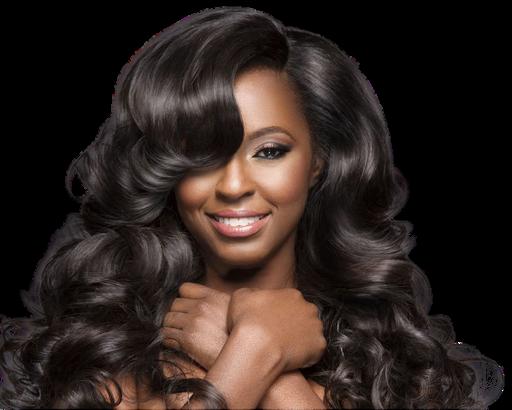
Desired Look: Determine the desired hairstyle and look that you wish to achieve with the hair weave Whether it's long and flowing locks, glamorous curls, or a trendy updo, identify the style that reflects your personal preferences and complements your facial features
Lifestyle Considerations: Consider your lifestyle and daily activities when selecting the weave style. If you have an active lifestyle or engage in activities that may cause excessive sweating, opt for a low-maintenance style that can withstand such activities On the other hand, if you prefer a versatile style that allows for various styling options, choose a weave that offers flexibility in terms of styling.
Hair Texture: Select a hair texture that closely matches your natural hair or achieves the desired look Whether you prefer straight, wavy, curly, or kinky hair, choose extensions that provide a seamless blend with your natural hair. This ensures a natural-looking result and easier styling.
PREPARING FOR HAIR WEAVING
Length and Volume: Determine the desired length and volume of the hair weave. Extensions come in various lengths, ranging from short to extra-long, allowing you to achieve the desired look Consider your natural hair's length and the level of volume you desire to create a balanced and harmonious style.
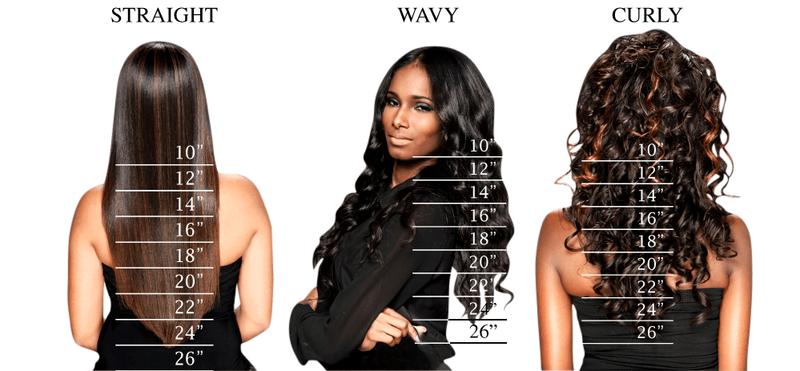
Maintenance: Assess the level of maintenance required for the chosen weave style Some styles may require more frequent washing, conditioning, or restyling If you prefer a lowmaintenance option, select a weave style that can be easily maintained with minimal effort.
By thoroughly preparing the natural hair, assessing the scalp and hair condition, and carefully selecting the right weave style, you can ensure a successful and satisfying hair weaving experience. Proper preparation and assessment contribute to a seamless and natural-looking result while ensuring the health and integrity of the natural hair
INSTALLING THE WEAVE PART 5
Preparing the Natural Hair
Properly preparing the natural hair is a crucial step in the process of installing a hair weave. This preparation ensures that the natural hair is in the best condition to support and blend with the hair extensions It begins with thoroughly washing the hair using a clarifying shampoo to remove any product buildup, dirt, or excess oils that may hinder the weave installation. Conditioning the hair with a moisturizing conditioner helps restore hydration and manageability Gently towel-drying the hair and applying a leave-in conditioner or detangling spray aid in detangling the hair
Using a wide-toothed comb or detangling brush, the hair is carefully combed from the ends to the roots, ensuring that any knots or tangles are removed without causing unnecessary breakage or damage to the hair strands. Partially drying the hair with a blow dryer on a low heat setting creates a suitable base for the weave installation, ensuring that the hair is not excessively wet or damp, which can hinder the bonding process and lead to discomfort during the installation.
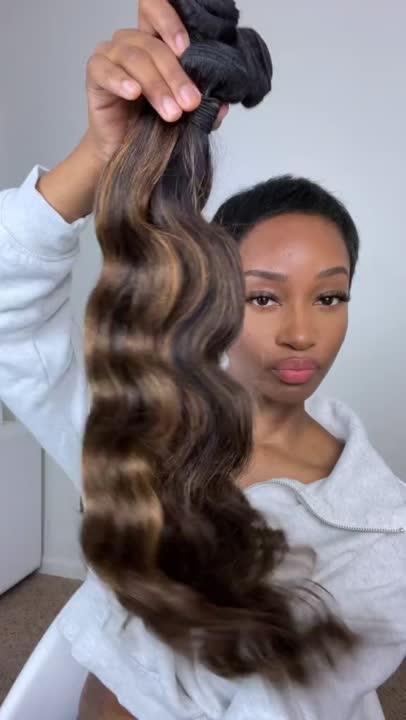
Creating the Base for Weaving
Creating a solid base is essential for a secure and comfortable hair weave installation. This base provides support for the hair extensions and helps distribute their weight evenly, reducing tension and potential damage to the natural hair. For a sew-in weave, the natural hair is parted into sections using a tail comb Starting from the nape of the neck, small cornrows or braids are created along the scalp. These cornrows should be neat and close to the scalp to ensure a flat and secure base for the weave.
PREPARING FOR HAIR WEAVING
Each cornrow is created by taking a small section of hair and dividing it into three equal parts. These sections are then crossed over each other, gradually adding hair from the sides as the braid progresses towards the ends The cornrows are braided tightly and neatly, ensuring that the natural hair is secure and that the braids lay flat against the scalp. The ends of the cornrows are secured with rubber bands or hair clips to prevent them from unraveling

When installing a bonding or fusion weave, a slightly different approach is taken to create the base Instead of creating cornrows, a thin layer of protective oil or gel is applied along the hairline and parting lines to safeguard the natural hair and scalp. This layer acts as a barrier between the scalp and any adhesive or bonding products used during the installation, preventing irritation. The adhesive or bonding products are carefully applied to the roots of the natural hair, ensuring an even and secure attachment
It is important to follow the manufacturer's instructions for the specific adhesive or bonding product being used, as different products may have varying application techniques and drying times
Attaching and Securing the Weave
Properly attaching and securing the weave is crucial for a comfortable and long-lasting installation. This ensures that the extensions blend seamlessly with the natural hair and remain securely in place, even with regular styling and everyday activities For a sew-in weave, the hair weft or extension is aligned with the cornrow base.
PREPARING FOR HAIR WEAVING
Using a curved needle and strong thread specifically designed for hair weaving, the weft is sewn onto the cornrows. Starting from one end and working towards the other, several stitches are made along the track to secure the weft The needle is carefully passed through the weft and the cornrow, ensuring that the stitches are tight and secure. This process is repeated for each row of the cornrow base until the desired style is achieved It is important to maintain even tension throughout the sewing process to ensure a consistent and natural look
In the case of a bonding or fusion weave, a slightly different approach is taken to attach and secure the extensions A small amount of bonding glue or adhesive specifically designed for hair extensions is applied to the root of the weft or extension. Carefully pressing the glued weft onto the cornrow base, starting from the nape of the neck and moving upwards, secures the weft in place Using a weaving comb or fingers, the weft is pressed to ensure a secure attachment. The pressure applied helps the adhesive bond the weft to the natural hair, creating a strong and durable connection. This process is repeated until all the wefts are attached, ensuring that the extensions are evenly distributed and blend seamlessly with the natural hair For a fusion weave, small sections of the natural hair and extension hair are taken. The extension hair is placed between

PREPARING FOR HAIR WEAVING
Using a curved needle and strong thread specifically designed for hair weaving, the weft is sewn onto the cornrows. Starting from one end and working towards the other, several stitches are made along the track to secure the weft The needle is carefully passed through the weft and the cornrow, ensuring that the stitches are tight and secure. This process is repeated for each row of the cornrow base until the desired style is achieved It is important to maintain even tension throughout the sewing process to ensure a consistent and natural look
In the case of a bonding or fusion weave, a slightly different approach is taken to attach and secure the extensions A small amount of bonding glue or adhesive specifically designed for hair extensions is applied to the root of the weft or extension. Carefully pressing the glued weft onto the cornrow base, starting from the nape of the neck and moving upwards, secures the weft in place Using a weaving comb or fingers, the weft is pressed to ensure a secure attachment. The pressure applied helps the adhesive bond the weft to the natural hair, creating a strong and durable connection. This process is repeated until all the wefts are attached, ensuring that the extensions are evenly distributed and blend seamlessly with the natural hair For a fusion weave, small sections of the natural hair and extension hair are taken.

PREPARING FOR HAIR WEAVING
The extension hair is placed between the section of natural hair, ensuring that the bond is positioned close to the root. Heat is applied using a fusion heat tool, which heats the bond and melts it onto the natural hair, creating a secure attachment The heat tool is carefully moved along the bond to ensure even melting and bonding. Holding the bond in place until it cools and solidifies ensures a strong bond that will withstand regular styling and maintenance This process is repeated for each section of the natural hair until the desired style is achieved
Finalizing the Installation
Once the extensions are attached and secured, it is important to ensure that they blend seamlessly with the natural hair Using a comb or fingers, the natural hair is gently blended with the extensions to create a cohesive and natural look. This blending process helps ensure that the transition between the natural hair and the extensions is smooth and undetectable It also helps create a uniform and even appearance, enhancing the overall aesthetic of the hairstyle. Loose or insecure attachments are checked, and any necessary adjustments or reinforcements are made to ensure a comfortable and secure weave installation It is essential to make sure that the weave feels comfortable on the scalp and that the attachments are secure, minimizing the risk of any discomfort or potential damage to the natural hair.
In conclusion, installing a hair weave involves careful preparation of the natural hair, creating a solid base for weaving, and properly attaching and securing the weave. By following these steps, individuals can achieve a comfortable and long-lasting hair weave installation with a seamless and natural-looking result. Proper preparation and installation techniques are essential for a successful weave that blends seamlessly with the natural hair and provides a comfortable and secure style.
CARING FOR HAIR WEAVES PART 6
Caring for hair weaves is essential to maintain their appearance, durability, and overall health. Proper care ensures that the extensions remain in good condition and that the natural hair underneath stays healthy This chapter will cover important aspects of caring for hair weaves, including washing and conditioning techniques, styling and maintenance tips, and dealing with tension and damage
Washing and Conditioning Techniques
Proper washing and conditioning techniques are crucial for maintaining the cleanliness and vitality of both the hair extensions and the natural hair When washing a hair weave, it is important to use gentle products that do not strip away moisture or cause unnecessary tangling. Begin by thoroughly wetting the hair, making sure to avoid excessively hot water as it can damage the extensions and loosen their attachment Apply a sulfate-free shampoo to the scalp and gently massage it in, taking care to avoid rough rubbing or pulling on the hair. Rinse thoroughly to remove any shampoo residue. Follow up with a moisturizing conditioner, focusing on the mid-lengths to ends of the hair. Use a wide-toothed comb or your fingers to gently detangle the hair while the conditioner is applied Allow the conditioner to sit for a few minutes before rinsing it out completely. Avoid applying excessive tension or pressure to the extensions or the scalp when washing and conditioning to prevent damage or loosening of the weave
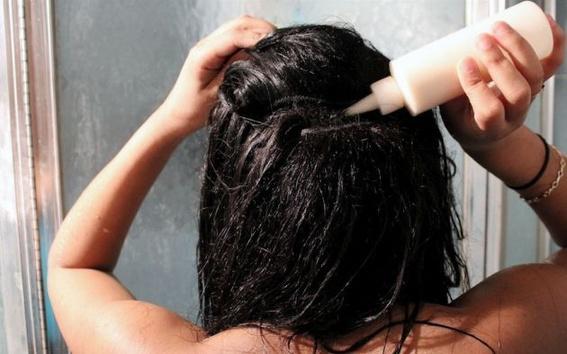
CARING FOR HAIR WEAVES
Styling and Maintenance Tips
Styling and maintenance play a significant role in preserving the appearance and longevity of a hair weave Here are some tips to consider:
To maintain the integrity of the hair weave, limit the use of heat styling tools, such as flat irons and curling irons Excessive heat can damage the hair extensions, leading to dryness, frizz, or even melting of synthetic fibres. If heat styling is necessary, use a heat protectant spray and set the tool to a moderate temperature. Opt for heatless styling techniques whenever possible, such as braiding or wrapping the hair to achieve desired styles
Use styling products specifically formulated for use with hair extensions. Avoid products that contain alcohol or harsh chemicals, as they can cause dryness and tangling Look for lightweight and water-based products that provide moisture and hold without weighing down the hair. Apply these products sparingly and evenly throughout the hair, focusing on the midlengths to ends.
Protect the hair while sleeping to minimize friction and reduce the chances of tangling or matting. Wrap the hair with a satin or silk scarf or sleep on a satin or silk pillowcase. These materials are smoother and gentler on the hair, reducing friction and maintaining the sleekness of the weave Avoid going to bed with wet hair, as this can create an environment for mould or mildew to develop, leading to unpleasant odours and potential damage.
Regularly detangle the hair using a wide-toothed comb or a detangling brush Start from the ends and work your way up to the roots, gently removing any knots or tangles Avoid forcefully pulling or yanking on the hair, as this can cause breakage or damage to the extensions or the natural hair. Take your time and be patient when detangling, using a detangling spray or leave-in conditioner if necessary to ease the process
CARING FOR HAIR WEAVES
Protect the hair during physical activities to minimize tangling, exposure to chlorinated or saltwater, and potential damage. Before engaging in physical activities or swimming, it is advisable to protect the hair with a swimming cap or by securing it in a ponytail or braid. This helps maintain the style and reduces the risk of tangling or damage caused by environmental factors.
Dealing with Tension and Damage
Tension and damage are common concerns when wearing hair weave. Excessive tension can lead to hair breakage, traction alopecia, or discomfort To mitigate these risks, consider the following:
Avoid tight hairstyles that place excessive stress on the hairline or pull tightly on the edges. Opt for looser hairstyles that distribute the weight more evenly and reduce the strain on the hair and scalp Protect the edges by using edge control or gentle styling techniques that do not place undue tension on these delicate areas.

CARING FOR HAIR WEAVES
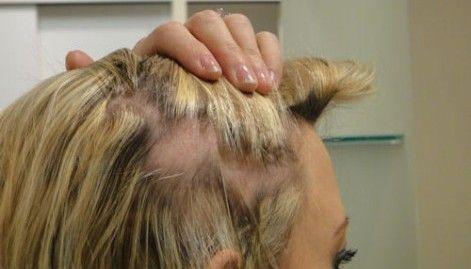
Minimize the use of chemical treatments, such as relaxers or perms, as they can weaken the natural hair and cause damage to both the natural hair and the extensions. Frequent chemical processing can compromise the integrity of the hair, leading to dryness, breakage, or even hair loss If chemical treatments are desired, consult with a professional stylist experienced in working with hair weaves to minimize the potential damage.
Schedule regular maintenance appointments with a professional stylist to ensure that the weave remains in good condition During these appointments, the stylist can check for any loose or damaged attachments and make necessary adjustments or repairs. Regular maintenance helps prolong the lifespan of the weave and ensures that it continues to look its best
When it is time to remove the weave, do it carefully and gently to avoid causing damage to the natural hair. Seek the assistance of a professional stylist if needed, as they have the expertise to safely remove the extensions without causing unnecessary tension or breakage After removing the weave, take the time to cleanse and nourish the natural hair to restore its health and vitality.
By following proper washing and conditioning techniques, implementing styling and maintenance tips, and being mindful of tension and potential damage, individuals can care for their hair weaves effectively. This ensures that the extensions remain beautiful, the natural hair stays healthy, and the overall weave experience is comfortable and long-lasting.
MAINTAINING A HEALTHY SCALP PART 7
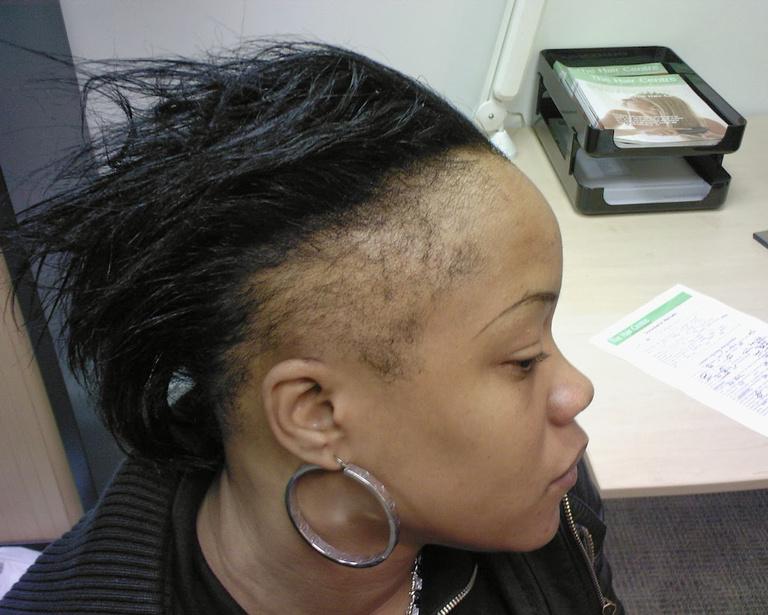
A healthy scalp is the foundation for beautiful and strong hair. Proper scalp care is essential to prevent scalp issues, promote hair growth, and maintain the overall health of the hair and scalp This chapter will cover important aspects of maintaining a healthy scalp, including establishing a scalp care routine, addressing scalp issues, and promoting hair growth and strength.
Scalp Care Routine
Establishing a scalp care routine is crucial for maintaining a healthy scalp This routine should include regular cleansing, exfoliation, and moisturization. Start by choosing a gentle and sulfate-free shampoo that is suitable for your hair and scalp type. Avoid harsh ingredients that can strip away natural oils and disrupt the scalp's balance When washing your hair, pay attention to massaging the scalp gently with your fingertips to stimulate blood circulation and remove any dirt or product buildup. Rinse thoroughly to ensure that no shampoo residue remains on the scalp.
MAINTAINING A HEALTHY SCALP

In addition to regular cleansing, exfoliating the scalp is important to remove dead skin cells, unclog hair follicles, and promote a healthy environment for hair growth There are several ways to exfoliate the scalp, such as using a scalp scrub, or a brush specifically designed for scalp exfoliation. Gently massage the exfoliating product or brush onto the scalp in circular motions to promote blood flow and remove any buildup Be mindful not to scrub too vigorously, as it may cause irritation or damage to the scalp
After cleansing and exfoliating, moisturizing the scalp is essential to keep it hydrated and nourished. Choose a lightweight and nongreasy scalp oil or serum that is suitable for your scalp type Apply a few drops onto the scalp and massage it in gentle circular motions. This helps to maintain the scalp's moisture balance and alleviate dryness or itchiness. However, be cautious not to apply too much product, as it may weigh down the hair and lead to an oily scalp
MAINTAINING A HEALTHY SCALP
Addressing Scalp Issues
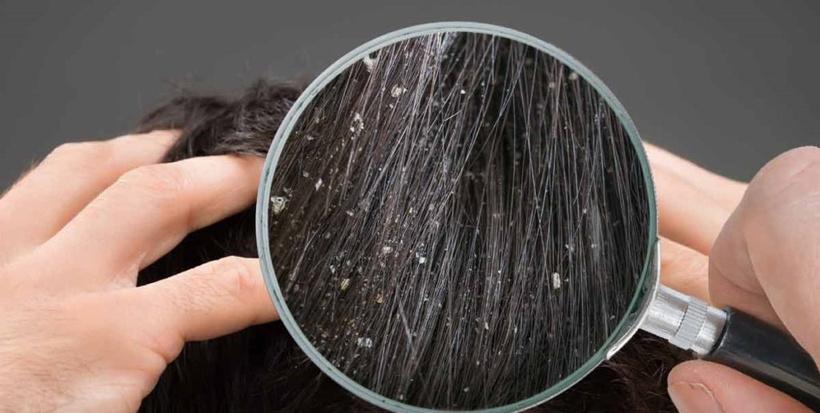
Scalp issues such as dandruff, itchiness, or sensitivity can occur, and addressing them promptly is important for maintaining a healthy scalp. If you experience dandruff, which is characterized by white flakes on the scalp and hair, consider using an antidandruff shampoo that contains ingredients like zinc pyrithione or ketoconazole These ingredients help reduce the build-up of yeast on the scalp, which is a common cause of dandruff Use the anti-dandruff shampoo as directed, and if the problem persists, consult a dermatologist for further guidance.
In cases of scalp itchiness or sensitivity, it is advisable to identify potential triggers and avoid them. Some common triggers include harsh hair products, excessive heat styling, or an allergic reaction to certain ingredients Choose hair care products that are gentle and free of irritants and avoid overusing heat styling tools If the itchiness or sensitivity persists, consult a dermatologist to determine the underlying cause and receive appropriate treatment.
MAINTAINING A HEALTHY SCALP
Promoting Hair Growth and Strength

A healthy scalp is essential for promoting hair growth and strength To encourage hair growth, ensure that your scalp receives proper nourishment and care. Incorporate foods rich in vitamins and minerals, such as fruits, vegetables, lean proteins, and healthy fats, into your diet to support overall scalp health Additionally, regular scalp massages can stimulate blood circulation, which brings essential nutrients to the hair follicles and promotes hair growth. Use your fingertips to gently massage the scalp in circular motions for a few minutes each day.
To strengthen the hair, focus on maintaining a balanced and nutritious diet, as well as using hair care products that are specifically formulated to strengthen and protect the hair strands. Avoid using excessive heat on the hair and protect it from environmental factors, such as UV rays and pollution, by wearing a hat or using a protective spray Regular trimming of split ends is also important to prevent further damage.
Consider incorporating natural remedies into your scalp care routine Ingredients like aloe vera, tea tree oil, and rosemary oil have properties that can nourish the scalp, soothe irritation, and promote healthy hair growth However, it is important to do a patch test before using any new ingredient on your scalp to ensure that you do not have any adverse reactions By establishing a scalp care routine, addressing scalp issues promptly, and promoting hair growth and strength through proper nourishment, you can maintain a healthy scalp and promote the overall health and beauty of your hair.
PART 8
Removing and reinstalling hair weaves require careful techniques to ensure the safety of both the natural hair and the extensions. This chapter will cover important aspects of removing and reinstalling hair weaves, including safe weave removal techniques, preparing the hair for reinstallation, and reattaching and styling the weave.
Safe Weave Removal Techniques
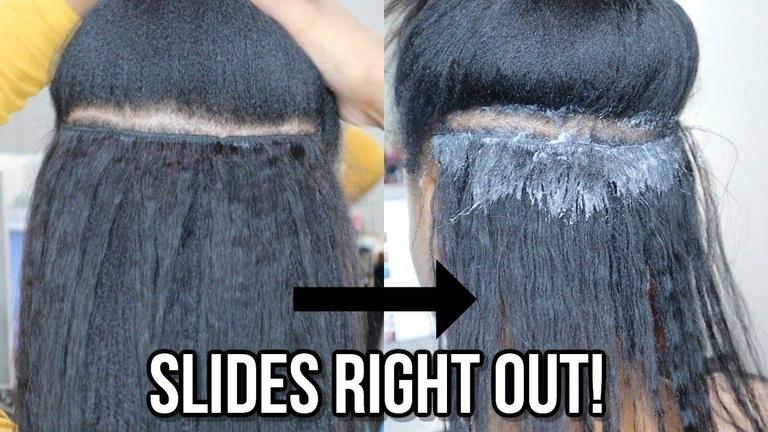
Removing a hair weave safely is crucial to prevent any damage to the natural hair Begin by carefully detangling the hair, starting from the ends, and working your way up to the roots. Use a widetoothed comb or your fingers to gently remove any knots or tangles. Take your time and be patient during this process to minimize the risk of breakage or damage
Once the hair is detangled, locate the attachment points of the weave. If it is a sew-in weave, carefully cut the thread using small scissors or a seam ripper. Start at one end and slowly work your way along the tracks, being cautious not to cut the natural hair For a bonded or fusion weave, use a specialized bond remover or solvent to break down the adhesive. Apply the remover to the bond or adhesive, allowing it to penetrate and weaken the attachment. Gently and slowly separate the bond from the natural hair, taking care not to pull or tug excessively
REMOVING AND REINSTALLING HAIR WEAVES

Preparing the Hair for Reinstallation
After the weave has been safely removed, it is important to prepare the hair for reinstallation Begin by thoroughly washing and conditioning the natural hair to remove any product buildup, dirt, or oils. Use a clarifying shampoo to deeply cleanse the hair and scalp, followed by a moisturizing conditioner to restore hydration and manageability Rinse the hair thoroughly to ensure that no residue remains
Once the hair is clean and conditioned, allow it to air dry or use a blow dryer on a low heat setting Avoid applying excessive heat directly to the hair, as it can cause damage or dryness Once the hair is dry, gently detangle it using a wide-toothed comb or a detangling brush, starting from the ends and working your way up to the roots. Apply a leave-in conditioner or a detangling spray to help ease the detangling process and minimize breakage
REMOVING AND REINSTALLING HAIR WEAVES
Reattaching and Styling the Weave
When reattaching the hair weave, it is important to ensure a secure and comfortable installation. Start by sectioning the hair and creating a suitable base, whether it is cornrows for a sew-in weave or using bonding or fusion techniques If opting for a sewin weave, create neat and even cornrows along the scalp, making sure they are not too tight to avoid tension on the hairline. For bonding or fusion weaves, ensure the hair is well-parted and prepared for the attachment method of choice
Once the base is prepared, start attaching the wefts or extensions. For a sew-in weave, use a curved needle and strong thread specifically designed for hair weaving. Secure the wefts onto the cornrows by sewing them in with tight and even stitches Be mindful of the tension applied during the sewing process to prevent discomfort or excessive pulling on the natural hair.

REMOVING AND REINSTALLING HAIR WEAVES
For bonding or fusion weaves, carefully apply the bonding glue or adhesive to the root of the weft or extension. Press the glued weft onto the prepared base, starting from the nape of the neck and moving upwards Use a weaving comb or your fingers to firmly press and secure the weft If using fusion techniques, take small sections of the natural hair and the extension hair, ensuring the bond is positioned close to the root. Apply heat using a fusion heat tool to melt the bond and create a secure attachment. Hold the bond in place until it cools and solidifies
Once the weave is securely attached, blend the natural hair with the extensions to create a cohesive and natural look. Use a comb or your fingers to gently comb and style the hair, ensuring that the extensions seamlessly integrate with the natural hair Trim any excess or uneven ends for a polished and well-blended appearance.
Throughout the reinstallation process, ensure that the weave is not too tight, as it can cause discomfort or tension on the scalp Pay attention to the scalp's health and comfort, making any necessary adjustments to alleviate any potential issues.
In conclusion, removing and reinstalling hair weaves requires careful techniques to protect the natural hair and maintain the integrity of the extensions Safely remove the weave by detangling the hair and carefully cutting the threads or using a bond remover for bonded or fusion weaves. Prepare the hair for reinstallation by washing, conditioning, and detangling it When reattaching the weave, create a suitable base, whether through cornrows, bonding, or fusion techniques Securely attach the wefts or extensions and blend them with the natural hair for a seamless and comfortable installation.
PART 9
Hair weaves can sometimes present challenges and issues that need to be addressed for a successful and comfortable experience This chapter will cover important aspects of troubleshooting common hair weave problems, including tangled and matted weaves, itching and irritation, and proper weave colour and texture selection.
Tangled and Matted Weaves
One common problem with hair weaves is tangling and matting This can occur due to factors such as improper maintenance, friction, or excessive manipulation. To prevent tangling and matting, it is crucial to establish a proper care routine. Regularly detangling the hair using a wide-toothed comb or detangling brush, starting from the ends, and working your way up to the roots, is essential to prevent knot formation. It is important to be gentle and patient during this process to avoid causing unnecessary breakage or damage to the weave and natural hair.
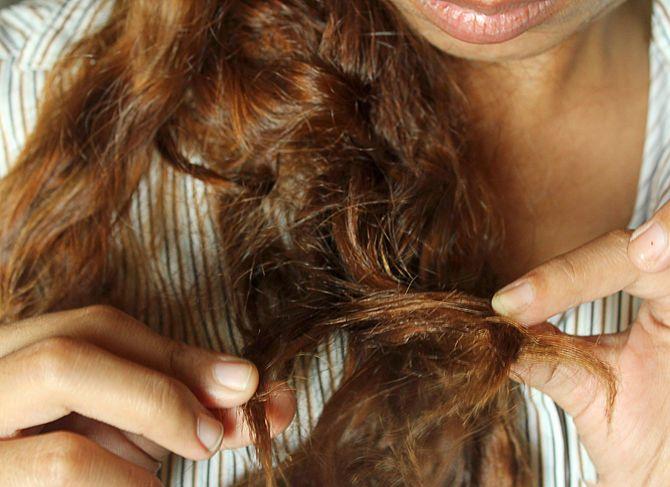
TROUBLESHOOTING COMMON HAIR WEAVE PROBLEMS

Avoid excessive manipulation of the weave, including excessive brushing, combing, or styling. Over-brushing or aggressive combing can lead to tangling and matting, as well as increased shedding Instead, opt for gentle styling techniques and use minimal force when handling the hair. Additionally, minimize friction by avoiding rough pillowcases or excessive rubbing of the hair against clothing or accessories Sleeping with a satin or silk scarf or using a satin or silk pillowcase can help reduce friction and tangling during sleep
Regular maintenance appointments with a professional stylist can also help prevent tangling and matting. During these appointments, the stylist can assess the condition of the weave, detangle any knots, and make any necessary adjustments or repairs Professional maintenance ensures that the weave remains in optimal condition and helps prevent tangling and matting issues.
TROUBLESHOOTING COMMON HAIR WEAVE PROBLEMS
Avoid excessive manipulation of the weave, including excessive brushing, combing, or styling. Over-brushing or aggressive combing can lead to tangling and matting, as well as increased shedding Instead, opt for gentle styling techniques and use minimal force when handling the hair. Additionally, minimize friction by avoiding rough pillowcases or excessive rubbing of the hair against clothing or accessories Sleeping with a satin or silk scarf or using a satin or silk pillowcase can help reduce friction and tangling during sleep
Itching and Irritation
Itching and irritation of the scalp can be an uncomfortable problem associated with hair weaves It can be caused by factors such as product build-up, dryness, or an allergic reaction to certain hair care products or materials used in the weave. To address itching and irritation, it is important to identify the underlying cause
If product build-up is the issue, thoroughly cleanse the scalp using a clarifying shampoo to remove any residue or build-up. Ensure that all shampoo and conditioner are rinsed out completely to prevent further irritation Additionally, avoid using heavy or greasy styling products that can contribute to product build-up and scalp irritation.
Dryness of the scalp can also lead to itching and irritation To combat dryness, incorporate moisturizing products into your scalp care routine. Use a lightweight and non-greasy scalp oil or moisturizing serum to provide hydration and relieve dryness. Apply a few drops onto the scalp and gently massage it in circular motions Additionally, avoid excessive heat styling and protect the hair and scalp from harsh environmental conditions, such as extreme heat or cold.
If an allergic reaction is suspected, discontinue the use of any hair care products or materials that may be causing the irritation Consult a dermatologist if the itching and irritation persist or worsen. They can help identify the specific allergen and recommend suitable alternatives or treatments.
TROUBLESHOOTING COMMON HAIR WEAVE PROBLEMS
Proper Weave Colour and Texture Selection
Selecting the right weave colour and texture is crucial for a natural and seamless look Choosing a colour that closely matches your natural hair colour or desired style is important to achieve a cohesive and realistic result. If you are unsure about the best colour match, consult a professional stylist who can assist in selecting the most suitable shade They can also help blend the weave with your natural hair colour for a seamless transition
Texture selection is equally important to ensure that the weave blends well with your natural hair Consider factors such as curl pattern, wave pattern, or straightness to find a texture that matches or complements your natural hair. If desired, consult a professional stylist to determine the most suitable texture and achieve the desired outcome

TROUBLESHOOTING COMMON HAIR WEAVE PROBLEMS
It is essential to consider the quality of the weave when selecting the colour and texture. Opt for high-quality hair extensions that closely mimic the look and feel of natural hair Quality weaves are less prone to tangling, matting, and other issues Consult with reputable vendors or professional stylists to ensure that you are purchasing high-quality hair extensions.
In conclusion, troubleshooting common hair weave problems requires attention to issues such as tangling and matting, itching and irritation, and proper weave colour and texture selection. By following proper care routines, minimizing manipulation, and selecting suitable weave colours and textures, individuals can overcome these challenges and enjoy a comfortable and naturallooking hair weave experience
PART 10
As hair weaving continues to evolve, advanced techniques and emerging trends offer new possibilities for creative styling and customization This chapter will explore advanced styling techniques, the art of customizing hair weaving, and the latest trends in the world of hair weaving.
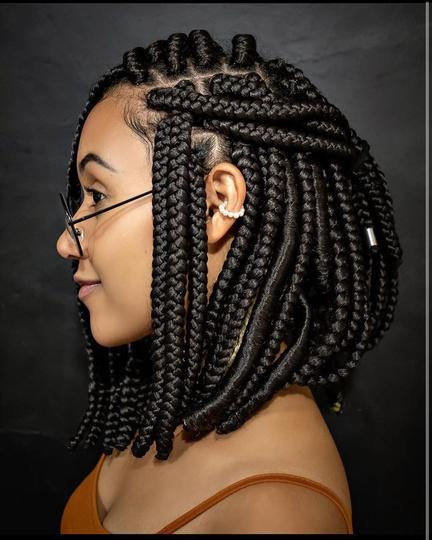
Advanced Styling Techniques
Advanced styling techniques push the boundaries of creativity and allow for intricate and unique hair weave designs. One such technique is the art of hair extensions placement, where extensions are strategically placed to create depth, volume, and dimension This technique involves blending different lengths and colours of hair extensions to achieve a seamless and naturallooking result. Skilled stylists can use various placement methods such as layering, stacking, or feathering to create customized and visually striking hairstyles
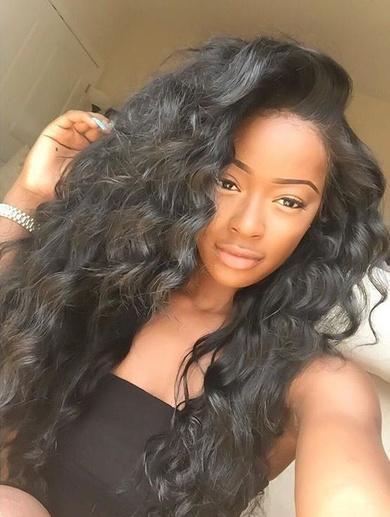
ADVANCED HAIR WEAVING TECHNIQUES AND TRENDS


Another advanced styling technique is the creation of intricate braided patterns within the weave. This technique allows for the incorporation of intricate braids, such as cornrows or intricate designs, into the weave These braided patterns add texture and visual interest to the hairstyle, enhancing its overall aesthetic appeal. Skilled stylists can combine different braiding techniques and weave placements to create stunning and unique looks
Furthermore, advanced cutting and shaping techniques can transform a hair weave into a personalized and tailored style. Precision cutting and shaping can be used to create layers, angles, and face-framing effects, ensuring that the weave blends seamlessly with the natural hair and complements the individual's features Skilled stylists utilize their expertise in haircutting to create customized shapes and styles that enhance the overall look of the hair weave

ADVANCED HAIR WEAVING TECHNIQUES AND TRENDS
Customizing Hair Weaves

Customizing hair weaves allows individuals to achieve a personalized and unique look that suits their preferences and style. One popular method of customization is the use of hair colour. Stylists can expertly blend multiple colours to create dimension and depth, adding visual interest to the weave Techniques such as ombre, balayage, or highlights can be applied to hair extensions to achieve a customized and vibrant result Custom colorization of the weave allows individuals to express their creativity and create a hairstyle that is truly their own.
Additionally, customization can be achieved using texture manipulation Stylists can alter the texture of the hair extensions to match the natural hair or create desired styles. This can be done through techniques such as perming, curling, or straightening Texture manipulation allows for versatility in styling options, as the weave can be transformed to suit different occasions or preferences.
ADVANCED HAIR WEAVING TECHNIQUES AND TRENDS
Emerging Trends in Hair Weaving

The world of hair weaving is constantly evolving, with new trends and techniques emerging regularly One emerging trend is the use of unconventional materials in hair weaving. Stylists and hair artists are experimenting with unique materials, such as feathers, beads, or fabric, to create artistic and eye-catching designs within the weave These unconventional materials add an element of creativity and individuality to the hairstyle, making it stand out and reflect the wearer's personality.
Another emerging trend is the use of innovative installation methods Advanced techniques, such as micro-link extensions or invisible tape-in extensions, offer seamless and undetectable results. These installation methods involve attaching the extensions using discreet and lightweight methods, minimizing the visibility of the attachment points These innovative techniques provide a natural and effortless look while ensuring the comfort and longevity of the weave.
Furthermore, natural and organic approaches to hair weaving are gaining popularity Many individuals are seeking out ethically sourced and chemicalfree hair extensions, opting for sustainable and eco-friendly options This trend reflects a growing awareness of the environmental impact of hair products and a desire for more natural and holistic solutions.
ADVANCED HAIR WEAVING TECHNIQUES AND TRENDS
Advanced hair weaving techniques and emerging trends offer exciting possibilities for creative styling and customization. Advanced styling techniques allow for intricate designs, customized cuts, and texture manipulation, resulting in personalized and unique looks. Customizing hair weaves through colour and texture manipulation enables individuals to express their creativity and individuality
The emerging trends in hair weaving encompass the use of unconventional materials, innovative installation methods, and natural and organic approaches.
By staying up to date with advanced techniques and embracing emerging trends, individuals can enjoy the limitless possibilities of hair weaving and create hairstyles that are truly extraordinary.
